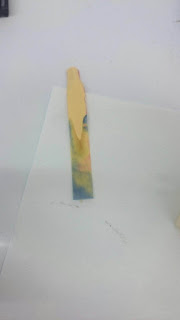Fehling's solution is a chemical test used to differentitate between reducing and non-reducing sugars. This test is based on the reaction of a functional group of sugar molecules with Fehling's reagent.
Fehling's reagent has to separate solutions: Fehling's A and Fehling's B.
Fehling's A: is a blue aqueous solution of copper (II) sulphate.
Fehling's B: clear and colourless solution of potassium sodium tartrate and sodium hydroxide.
OBJECTIVES:
- Identify reducing sugars.
- Comprehend redox reactions.
- Understand the relation between structure and reducing ability of some sugars.
PROCEDURE:
 1. Take 5 test tubes and label: G, M, S, L, ST
1. Take 5 test tubes and label: G, M, S, L, ST2. Put 2mL of distilled water inside each tube.
3. With different spatulas put a small amount of each sugar. Dissolve the sugar.
4. Add 2mL of Fehling's A solution and then Fehling's B.
5. Place each test-tube in a boiling water bath (250 mL beaker on a hotplate stirrer).
6. Observe what is happening.

Results: We can see that different test tubes have an orange colour.
Starch Hydrolysis:
7- Place 2mL of 1% starch in a test tube and add 0,5 mL of 3M HCL. Mix and place this mixture in a boiling water bath for 10 minutes.
8- After 10 minutes, remove the tube from the water bath and let it cool. Neutralize this solution with 1M NaOH and mix well.
9- Transfer 10 drops of this solution to a small test tube.
10- Add 1mL of Fehling's A solution and 1mL of Feghling's B.
11- Heat for a few minutes in a boiling water bath.
12- Record your observations. Compare the results of this test with your results for unhydrolyzed starch in the step 1 of this experiment.
You can see that in the result the colour is blue/green that means that is neutralized.











